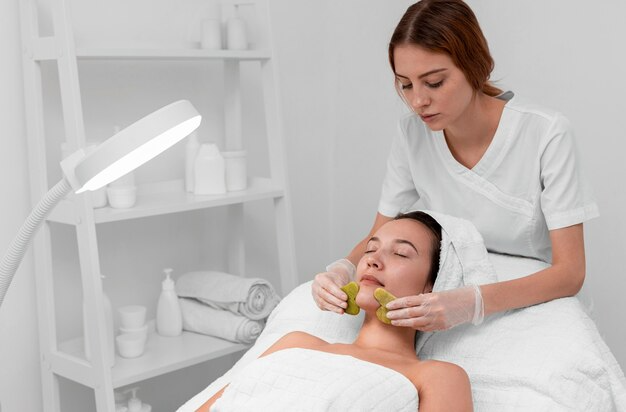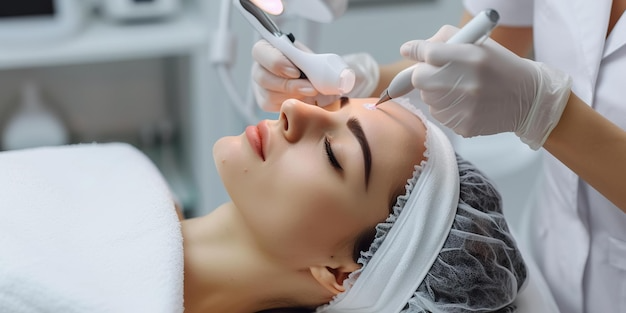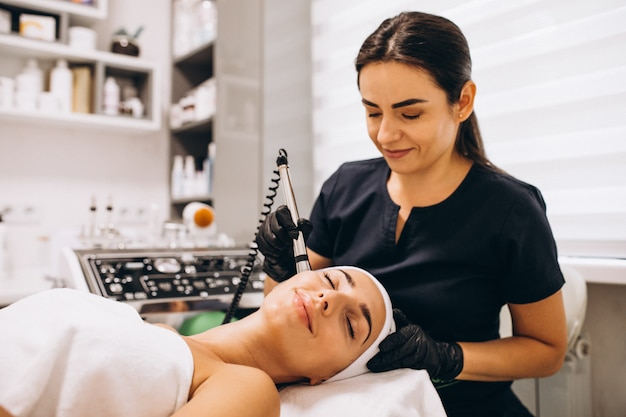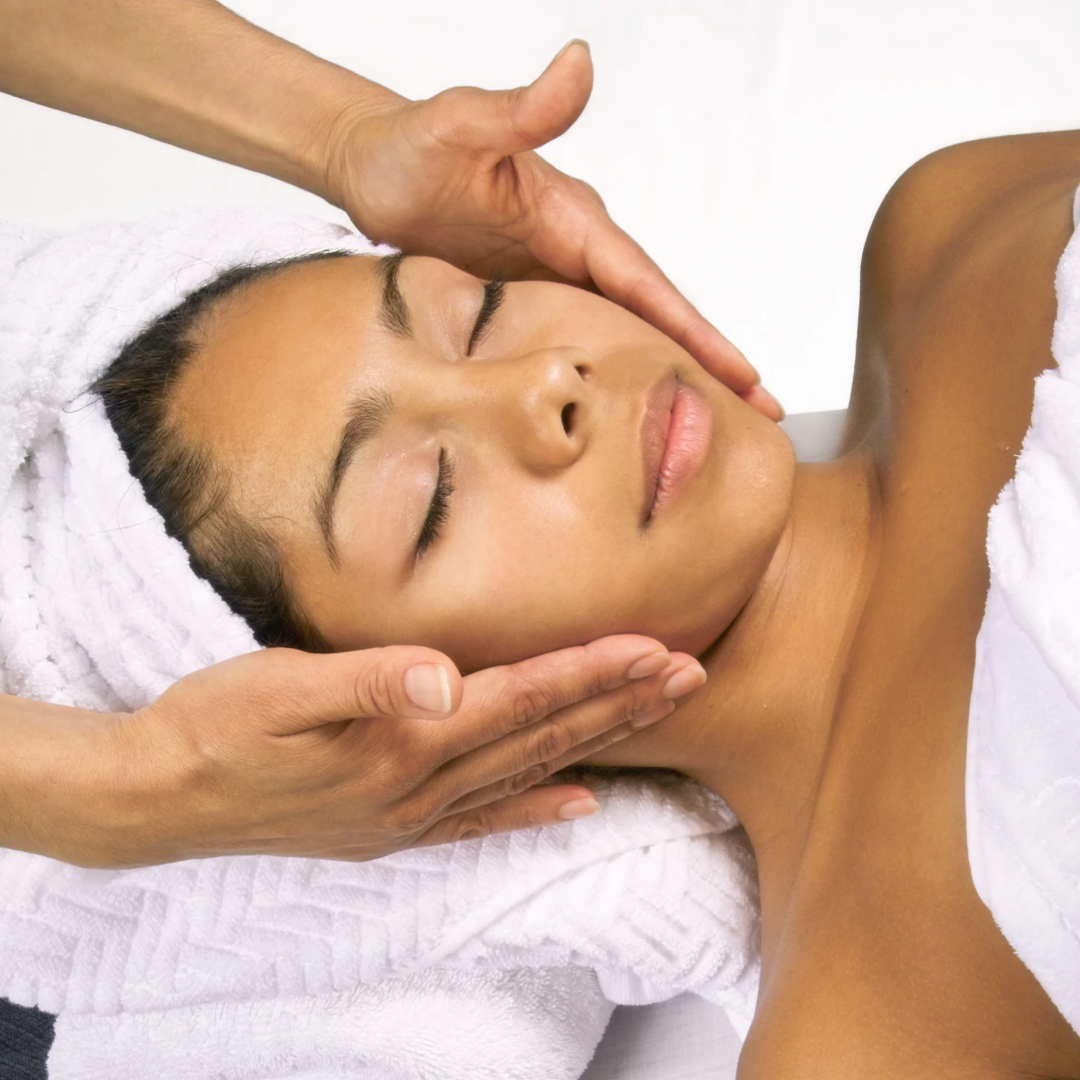As we age, our skin experiences a range of concerns and conditions, from acne and wrinkles to sunspots and hyperpigmentation. We may notice we no longer have our younger days’ firm, plump skin.
Luckily, plenty of advanced aesthetic treatments are available to help address these common skin concerns. A few of the most well-known treatments include microneedling and laser skin resurfacing. Both of these treatments are safe and effective options for reversing the signs of aging and improving the quality and appearance of your skin.
However, they work very differently to rejuvenate the skin.
Ultimately, the choice between microneedling vs laser resurfacing boils down to your unique skin concerns, your goals, and your personal preferences, such as your tolerance for downtime.
Keep reading as we compare laser resurfacing and microneedling and explain what sets them apart so you can confidently decide which skin rejuvenation treatment is best for addressing your beauty concerns.
What is Microneedling and How Does It Rejuvenate the Skin?
If you are looking for a treatment that can reduce the signs of aging and address skin imperfections such as acne scarring, stretch marks, wrinkles, and skin laxity, microneedling is a safe and rewarding procedure to consider.
Microneedling is a minimally invasive treatment that supports skin rejuvenation by triggering the body’s natural healing response and inducing collagen synthesis. The treatment uses a device with tiny, sterile needles that create microscopic punctures on the skin’s surface. This microdamage signals the skin to jumpstart healing and repair by increasing new collagen and promoting rapid skin cell turnover.
Post-micro needling, new collagen and elastin formation continue to take place. As a result, fine lines, wrinkles, and texture issues like acne scars improve, and the skin becomes smoother and more radiant.
Radiofrequency (RF) microneedling, such as Morpheus8, is an enhanced form of traditional microneedling that delivers high-intensity RF energy deep beneath the skin’s surface. The addition of RF energy amplifies the production of collagen and produces a significant skin tightening effect. Simultaneously, RF microneedling can improve deep wrinkles, scarring, stretch marks, and cellulite. Improvements are noticeable within three weeks of treatment and can last up to one year. With a series of treatments, results can last up to three years.
Both microneedling and RF microneedling are amazing options that provide safe and noticeable improvements to skin firmness, smoothness, and elasticity. Patients of all skin types and tones enjoy the lasting benefits of microneedling with minimal downtime.
What is Laser Skin Resurfacing and How Can It Rejuvenate the Skin?
For individuals who fear needles or prefer a different approach to skin rejuvenation, laser skin resurfacing is a safe and rewarding cosmetic alternative that boasts impressive skin-smoothing results.
Laser resurfacing uses a laser device to emit light energy into the layers of skin. During treatment, laser energy heats layers of skin and stimulates collagen remodeling. This helps produce new, healthy skin cells and fiber growth. Two popular laser skin resurfacing treatments are Clear and Brilliant Touch Laser and Fraxel Dual Laser.
Both of these non-ablative laser treatments are made by the same company and utilize similar technology. The CO2 laser is another laser resurfacing method that takes a more aggressive approach to skin rejuvenation. This ablative laser treatment removes the outer layer of skin while heating the underlying skin. Overall, these types of laser resurfacing treatments differ in their energy wavelengths, penetration depths, and the specific skin concerns that they target.
Fraxel Laser Skin Resurfacing
Fraxel dual laser is powerful, high energy treatment that targets the superficial and middle layers of the skin. This intense treatment is highly effective for improving skin tone and texture irregularities such as acne scars and surgical scars, fine lines, mild to moderate wrinkles, pigmentation irregularities, and sun damage. Fraxel is ideal for fair to medium skin tones and for patients who are not prone to hyperpigmentation such as melasma.
Since the treatment delivers more intense energy, discomfort and downtime exist. However, noticeable improvements to skin tone, texture, and overall smoothness after just one session make the treatment extremely worthwhile.
Clear and Brilliant Laser Resurfacing
Clear and Brilliant Laser Resurfacing is a lower-energy laser treatment that uses different wavelengths of light energy to clear and rejuvenate the top surface of the skin. Also known as the “baby Fraxel,” this laser treatment is far more gentle than Fraxel and has little to no downtime. Clear and Brilliant is ideal for treating surface issues such as discoloration or enlarged pores.
Unlike Fraxel, this treatment is safe for all skin types, including darker skin tones and patients with melasma or hyperpigmentation. Since there is little to no downtime, many patients opt for a Clear and Brilliant treatment right before a special event to achieve a brighter and more glowing complexion.
Microneedling vs Laser Skin Resurfacing
Microneedling and laser skin resurfacing are two amazing options that can significantly enhance your complexion by safely targeting skin imperfections to enjoy a healthier and more radiant complexion.
However, deciding whether laser skin resurfacing or microneedling is the better treatment for accomplishing your skin goals is not a simple answer. The type of skin concerns you are treating, the severity of these concerns, and your tolerance for pain and downtime all influence your ideal treatment plan.
Microneedling vs Laser for Wrinkles and Fine Lines
Microneedling and laser skin resurfacing are great options for achieving a wrinkle-free complexion.
RF microneedling can tackle fine lines and wrinkles thanks to its skin tightening and plumping effect. If you don’t mind waiting a few weeks for results to appear, this long-lasting treatment can be a worthwhile wrinkle-reducing method. Microneedling is safe for all skin tones, including darker skin tones, and carries a low risk of causing hyperpigmentation, such as melasma.
However, individuals looking to tackle more pronounced lines and wrinkles more quickly may want to go with laser resurfacing. Laser energy penetrates the skin deeper, targeting both the epidermis and upper dermis. This allows treatments, such as Fraxel laser, to achieve more dramatic skin smoothing results than microneedling. Noticeable results are visible after just one treatment, unlike microneedling, which can take a few treatments before results are visible.
Remember that laser skin resurfacing is not recommended for patients with darker skin or those prone to melasma. Laser resurfacing also carries more discomfort and downtime, which may not be ideal for patients with a lower pain threshold.
Overall, the severity of wrinkles and personal preferences like pain tolerance and downtime will influence which treatment is a better fit for achieving a smoother complexion.
Microneedling vs Laser Skin Resurfacing for Scars
Microneedling vs laser for scars are two safe and worthwhile options to consider. Both treatments create new collagen in the skin that helps to smooth the appearance of scars. Ultimately, the case of laser vs microneedling for acne scars will depend on your skin tone, severity of scars, desired results, and how soon you wish to see results.
For patients with darker skin tones or pigmentation issues, microneedling is a safer option. However, it will take a series of sessions to produce visible results, while the new collagen creates fresh skin over time. A series of 3-6 treatments is ideal for reducing the appearance of mild to moderate scars and up to 12 sessions for more severe scars.
Laser skin resurfacing may be a more effective route for light to medium-skin patients who are not prone to hyperpigmentation. Fraxel laser targets severe scars like pitted acne scars, deep surgical scars, and scars left behind from injury and produces more noticeable results than microneedling. On average, you may need 3-5 sessions.
While laser resurfacing treatments achieve more dramatic results, they involve more discomfort and downtime than microneedling. With that in mind, laser skin resurfacing treatments can provide quicker and more noticeable results than microneedling regarding reducing scars.
Microneedling vs Laser Skin Resurfacing for Acne
When tackling acne, blemishes, and breakouts, you must be careful about which skin rejuvenation treatment you seek. Acne-prone skin is sensitive and should be handled with extra care and patience.
Traditional microneedling is not safe for individuals with active acne, blemishes, pimples, pustules, or any form of inflammation on the skin. The reason is that microneedling can spread the acne bacteria, causing acne to become more aggravated creating more inflammation and breakouts.
Laser skin resurfacing like Fraxel is generally not a good idea for treating active acne. Laser treatments can increase the chance of infection and worsen existing breakouts and pimples. Therefore, it is best to avoid this treatment, so you do not exacerbate any active acne or inflammation.
On the other hand, RF microneedling is a safe and effective option for combatting active acne and breakouts. There is plenty of evidence that nonablative RF microneedling like Morpheus8 can greatly improve acne thanks to its powerful thermal energy. RF microneedling decreases sebum production in the skin by heating and damaging the sebaceous glands. As a result, this encourages growth factors and healthy tissue to form.1
Microneedling vs Laser Skin Resurfacing for Hyperpigmentation
Hyperpigmentation is a common issue for both men and women. Luckily, both microneedling and laser skin resurfacing can be helpful solutions for individuals looking to reduce forms of hyperpigmentation. However, there are several considerations to be aware of.
Since both microneedling and RF microneedling are safe for all skin tones, individuals with darker skin tones should consider these safe and rewarding options to improve pigmentation woes. Microneedling tackles discoloration such as melasma and sunspots by creating skin micro-injuries that help break up excess hyperpigmentation and jumpstart rapid healing and collagen regeneration.
On the flip side, laser skin resurfacing poses a higher risk of complications for patients with darker skin tones as it can increase hyperpigmentation. Some studies have shown positive laser resurfacing results in skin of color; however, studies are ongoing.2
Additionally, laser skin resurfacing such as Fraxel laser or CO2 laser can make melasma worse in some patients by causing inflammation and aggravating the skin. Therefore, patients who are prone to melasma should consult with a trained professional to find out if this treatment is safe for you.
For individuals with light to medium skin tones looking to reduce sunspots, dark spots, and discoloration, laser skin resurfacing like Fraxel, or CO2 laser can be an amazing method to tackle these imperfections. CO2 laser breaks down pigmentation by deeply heating the skin and reducing discoloration on the superficial layer of skin to deliver a more even and radiant complexion.
Microneedling vs Laser Skin Resurfacing for Loose Skin
If you have loose, sagging skin, microneedling and laser resurfacing can both be great options for conquering it. Both methods work by injuring the skin in a controlled fashion.
With microneedling, fine needles penetrate the dermis to create micro-injuries that increase collagen and elastin production. This helps produce firmer and plumper new tissue growth. With laser resurfacing, powerful pulses of light energy heat up the skin to deliver deep, dermal collagen remodeling. As the skin heals, new, firmer skin replaces the old layers of skin. As a result, both microneedling and laser resurfacing treatments can effectively lift and firm the skin.
With RF microneedling, you may need multiple sessions to see skin-tightening results. However, with laser treatments like Fraxel or CO2 laser, some patients experience dramatic results in as little as one treatment. RF microneedling may also be a safer treatment route for individuals with darker skin tones or melasma.
Alternatively, ablative laser resurfacing, such as CO2 laser, may achieve more impressive skin tightening results but requires longer recovery time and has more side effects than microneedling.
Experience Ultimate Skin Rejuvenation With Microneedling and Laser Treatments in NYC and Miami
If you are looking to rebuild and regenerate healthy, radiant skin and combat signs of aging and imperfections without invasive surgical procedures, Skinney Medspa is here to help you achieve your skin rejuvenation goals.
At Skinney Medspa, we offer a wide range of the latest advanced laser technology to help you achieve remarkable skin rejuvenation without going under the knife or worrying about downtime and complications. Both microneedling and laser resurfacing are safe, convenient, and minimally invasive procedures that provide incredible rejuvenating capabilities for our patients in NYC and Miami.
Call (646) 217-4134 (NYC) or (786) 952-6164 (Miami) to book your complimentary skin consultation and find out if you are a candidate for microneedling, laser resurfacing, or a combination of both. We can’t wait for you to begin your skin rejuvenation journey and achieve firmer, clearer, and healthier-looking skin.






